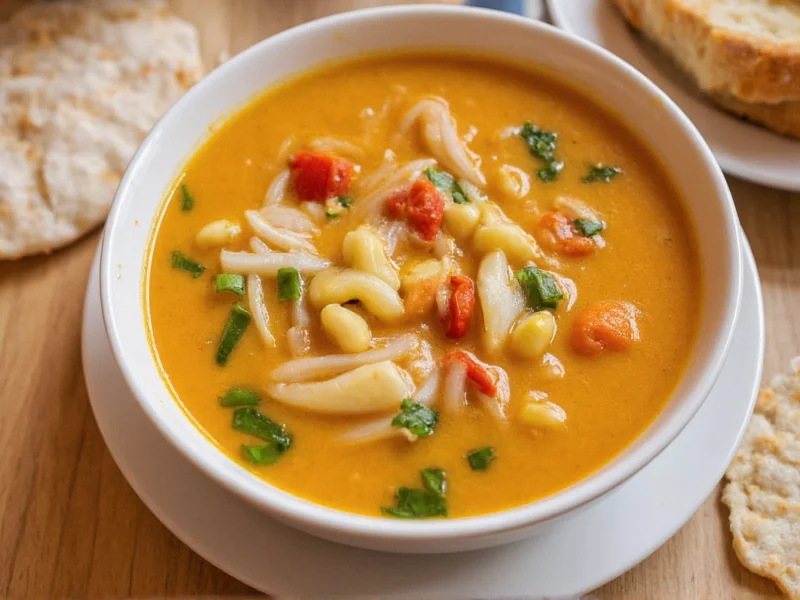For diners curious about what's simmering in the kitchen, Eat 'n Park maintains a consistent approach to their soup program that has satisfied customers for decades. The restaurant chain, primarily operating in Pennsylvania, Ohio, West Virginia, and Maryland, takes pride in serving made-from-scratch soups that complement their famous "Sunshine" salad and other menu staples.
Current Soup Offerings at Eat 'n Park
Understanding Eat 'n Park soup menu requires recognizing their commitment to seasonal rotation while maintaining classic favorites. Their standard soup lineup typically includes:
| Soup Variety | Availability | Key Ingredients |
|---|---|---|
| Chicken Noodle | Year-round | Homestyle broth, egg noodles, carrots, celery, chicken |
| Tomato Basil | Year-round | Fresh tomatoes, basil, onions, garlic, cream |
| Cream of Mushroom | Seasonal (Fall/Winter) | Button and cremini mushrooms, cream, herbs |
| Butternut Squash | Seasonal (Fall) | Fresh squash, apple, spices, cream |
| Vegetable Beef | Seasonal (Winter) | Beef broth, vegetables, tender beef |
The History Behind Eat 'n Park's Soup Tradition
Eat 'n Park's dedication to quality soups dates back to the company's founding in 1949. Unlike many casual dining establishments that rely on pre-made soup bases, Eat 'n Park has maintained a commitment to preparing soups from scratch using fresh ingredients. This approach requires significant kitchen resources but delivers the authentic flavor that keeps customers returning.
Understanding Eat 'n Park soup preparation methods reveals why their offerings stand out in the casual dining segment. Each morning, kitchen staff begin by preparing stocks and broths before incorporating fresh vegetables and proteins. This time-intensive process ensures depth of flavor that instant or canned alternatives cannot match.
Nutritional Information for Health-Conscious Diners
For those researching Eat 'n Park soup nutritional information, the restaurant provides basic details about their offerings. A standard cup (8 oz) serving typically contains:
- Chicken Noodle: Approximately 120 calories, 4g fat, 15g carbohydrates, 6g protein
- Tomato Basil: Approximately 110 calories, 5g fat, 14g carbohydrates, 2g protein
- Cream of Mushroom: Approximately 180 calories, 12g fat, 12g carbohydrates, 4g protein
These values may vary slightly based on seasonal preparations and specific ingredient proportions. Customers with dietary restrictions should consult with restaurant staff about specific ingredients, as Eat 'n Park soup recipes may contain common allergens like dairy, gluten, or soy.
Customer Favorites and Regional Variations
When exploring Eat 'n Park customer favorite soups, regional preferences emerge. In western Pennsylvania locations, the Chicken Noodle consistently ranks as the top choice, while Tomato Basil gains popularity in urban areas. Seasonal offerings often create temporary favorites, with Butternut Squash becoming particularly popular during autumn months.
Understanding Eat 'n Park soup seasonal varieties helps customers plan visits around their preferred options. The restaurant typically rotates seasonal soups quarterly, with special holiday offerings appearing around Thanksgiving and Christmas. This rotation keeps the menu fresh while maintaining the classics that customers expect.
How to Enjoy Eat 'n Park Soups
For those planning to try Eat 'n Park soup varieties, several serving options exist. Most locations offer soups as standalone cups or bowls, as part of lunch combos, or as dinner accompaniments. The "soup of the day" often appears on daily specials boards, while the permanent menu features at least two year-round options.
Customers researching Eat 'n Park soup preparation methods will appreciate that the soups are made fresh daily in each restaurant's kitchen. This commitment to quality means availability can sometimes vary based on ingredient supply and kitchen capacity, but the core offerings remain consistent across the chain.
What soups are currently available at Eat 'n Park?
Eat 'n Park typically offers Chicken Noodle and Tomato Basil as year-round options, with seasonal varieties rotating quarterly. Current seasonal offerings often include Butternut Squash in fall, Cream of Mushroom in winter, and sometimes Tomato Basil as a summer option. The specific "soup of the day" varies by location and season.
Are Eat 'n Park soups made from scratch?
Yes, Eat 'n Park prepares all their soups from scratch daily in each restaurant's kitchen. They use fresh ingredients rather than pre-made bases or canned soups, which contributes to their distinctive flavor profile and quality.
Does Eat 'n Park offer vegetarian soup options?
Yes, Tomato Basil is typically vegetarian (though customers should confirm as recipes may change), and seasonal offerings like Butternut Squash are often vegetarian-friendly. However, some soups may contain chicken or beef broth, so customers with specific dietary requirements should ask restaurant staff about current ingredients.
How can I find out what soup is available at my local Eat 'n Park?
The best way to check current soup offerings is to call your local Eat 'n Park directly, as selections can vary by location and change daily. Some locations post their "soup of the day" on social media, and the restaurant's website sometimes features seasonal menu updates.
Does Eat 'n Park sell their soup to take home?
Eat 'n Park does not currently sell their soups in retail containers for home consumption. Their soups are prepared fresh daily for restaurant service only. Some locations may offer larger portions to take home, but they don't sell packaged soups for later preparation.











 浙公网安备
33010002000092号
浙公网安备
33010002000092号 浙B2-20120091-4
浙B2-20120091-4